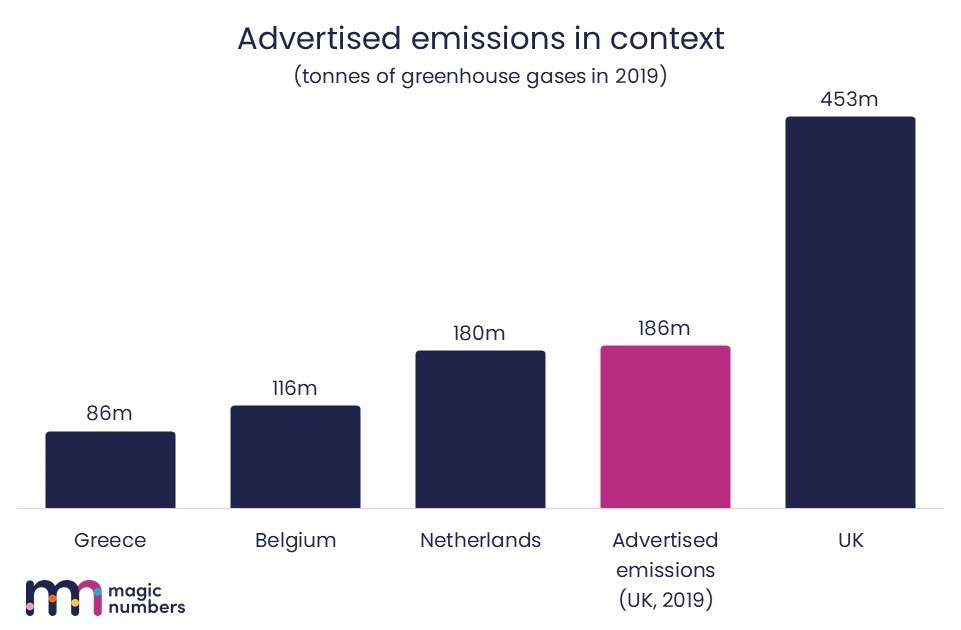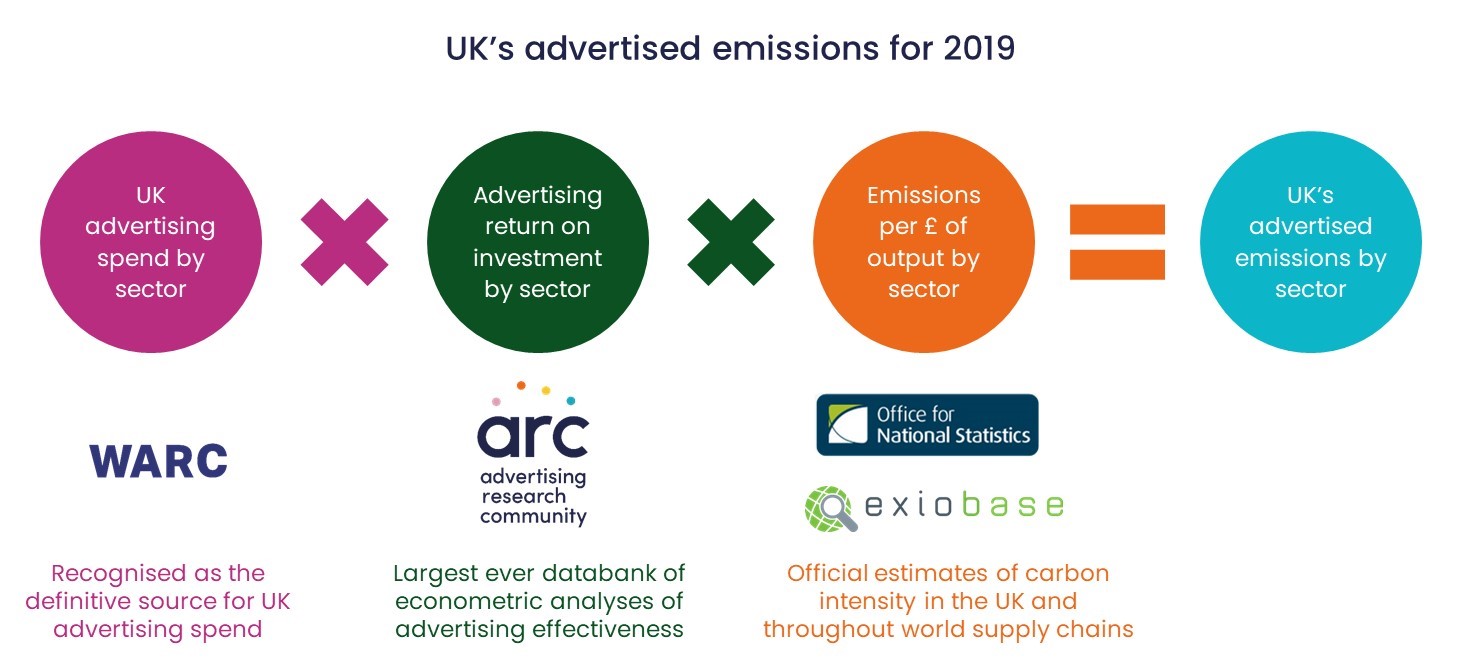That’s the finding of new research by Purpose Disruptors and magic numbers launching at COP26 in Glasgow in November 2021. It’s 186m tonnes of greenhouse gases, equivalent to running 47 coal-fired power plants all year round.
It’s important because the window available to keep us within 1.5 degrees of pre-industrial temperatures is closing. People with the power to make the necessary changes have to get on with it.
And UK advertising does have power.
Our research confirms that advertising plays a significant positive role in the UK economy. We estimate that nearly £90bn worth of products were sold because of advertising in 2019 – that’s a full 4% of GDP, or c.£6.30 worth of economic activity per £1 spent on advertising.
But there are knock-on effects for global warming. Incremental sales mean that advertisers make more products and services, and their suppliers make more, and their suppliers too. At every stage, this leads to more emissions of greenhouse gases.
Once all of those global impacts are added up, the total is equivalent to all emissions coming out of the Netherlands, and twice the total from Greece.




